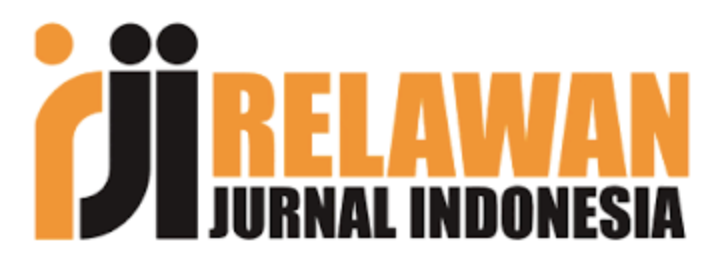Analysis of the Relationship Between Polypharmacy and the Potential for Drug Interactions in the Prescription of Patients with Type 2 Diabetes Mellitus
DOI:
https://doi.org/10.70410/jfg.v11i2.332Keywords:
Type 2 Diabetes Mellitus, Polypharmacy, Drug Interactions, Cross-sectionalAbstract
The IDF estimates that the prevalence of diabetes mellitus based on age will continue to increase from 2021 to 2045 (24.0% vs 24.7%). Patients with diabetes mellitus have comorbidities that result from elevated blood glucose levels, leading to polypharmacy and potential drug interactions. This study aims to determine the percentage of drug interactions and the relationship between polypharmacy and the potential for drug interactions in patients with type 2 diabetes mellitus at RSU Rama Hadi Purwakarta. The study was conducted using a cross-sectional, retrospective method, analyzing prescriptions of patients with type 2 diabetes mellitus at RSU Rama Hadi from September 1 to 30, 2022. Prescriptions were identified for interaction types and severity using drugs.com, Medscape, and Stockley's Drug Interaction Handbook, 9th edition, with results analyzed using Fisher's exact test. The study found that patients aged 56-65 years (40.1%) were more likely to suffer from type 2 diabetes mellitus, with females having a higher incidence compared to males (70.7% vs 29.3%). Among 147 prescriptions, 97% had drug interactions, with moderate severity predominating (97.8%), and pharmacodynamic interactions being the most common (76%). Fisher's exact test revealed a p-value of 0.001 (p < 0.005). Thus, it can be concluded that there is a significant relationship between polypharmacy and the potential for drug interactions in the prescriptions of type 2 diabetes mellitus patients at the pharmacy department of RSU Rama Hadi Purwakarta.
Downloads
References
Almalki, Z.S. et al. (2020) “Prevalence, risk factors, and management of uncontrolled hypertension among patients with diabetes: A hospital-based cross-sectional study,” Primary Care Diabetes, 14(6), pp. 610–615. Available at: https://doi.org/10.1016/j.pcd.2020.02.004.
Ayutthaya, S.S. and Adnan, N. (2020) “Faktor Risiko Hipertensi pada Penderita Diabetes Mellitus Tipe 2,” Jurnal Ilmu Kesehatan Masyarakat, 9(02), pp. 60–71. Available at: https://doi.org/10.33221/jikm.v9i02.512.
Dasopang, E.S., Harahap, U. and Lindarto, D. (2015) “Polipharmacy and Drug Interactions in Elderly Patients with Metabolic Diseases,” Indonesian Journal of Clinical Pharmacy, 4(4), pp. 235–241. Available at: https://doi.org/10.15416/ijcp.2015.4.4.235.
Dipiro, Joseph T, Yee, Garry C, Posey, L.Michael, Haines, Stuart T. , Nolin, Thomas D., Ellingrod, V.L. (2020) Book Review: Pharmacotherapy: A Pathophysiologic Approach, 11 th Edition, Annals of Pharmacotherapy. Available at: https://doi.org/10.1345/aph.1h160.
Dobric?, E.C. et al. (2019) “Polypharmacy in type 2 diabetes mellitus: Insights from an internal medicine department,” Medicina (Lithuania), 55(8), p. 8. Available at: https://doi.org/10.3390/medicina55080436.
Frydrychowicz, C. et al. (2017) “Colchicine triggered severe rhabdomyolysis after long-term low-dose simvastatin therapy: a case report,” Journal of Medical Case Reports, 11(1), pp. 1–5. Available at: https://doi.org/10.1186/s13256-016-1169-z.
Handayani, K. et al. (2019) Potensi Interaksi Obat Pada Resep Pasien Diabetes Melitus Rawat Jalan di RS X Jakarta Pusat.
IDF, I.D.F. (2021) IDF Diabetes Atlas IDF Diabetes Atlas.
Imelda, S.I. (2019) “Faktor-Faktor Yang Mempengaruhi Terjadinya diabetes Melitus di Puskesmas Harapan Raya Tahun 2018,” Scientia Journal, 8(1), pp. 28–39. Available at: https://doi.org/10.35141/scj.v8i1.406.
“Infodatin 2020 Diabetes Melitus” (no date).
Isnaini, N. and Ratnasari, R. (2018) “Faktor risiko mempengaruhi kejadian Diabetes mellitus tipe dua,” Jurnal Kebidanan dan Keperawatan Aisyiyah, 14(1), pp. 59–68. Available at: https://doi.org/10.31101/jkk.550.
Julianti, I.M.D. (2021) “Hubungan Antara Kadar Gula Darah Dengan Tekanan Darah Pada Pasien Diabetes Melitus Tipe II,” Indonesian Journal of Pharmacy, 4(2), pp. 93–101.
Kumari, S., Jain, S. and Kumar, S. (2022) “Effects of Polypharmacy in Elderly Diabetic Patients: A Review,” Cureus, 14(9), pp. 1–7. Available at: https://doi.org/10.7759/cureus.29068.
Leny Nopitasari, B. (2023) “Evaluasi Interaksi Obat Pada Pasien Diabetes Melitus Tipe 2 Rawat Jalan Di Rumah Sakit Umum Daerah Provinsi NTB Tahun 2021,” Jurnal Ilmu Kefarmasian, 4(1), pp. 186–190.
Nasution, Fitriani, Andilala, Siregar, A.A. (2021) “FAKTOR RISIKO KEJADIAN DIABETES MELLITUS,” Jurnal Ilmu Kesehatan, 9(1).
Saibi, Y., Hasan, D. and Shaqila, V. (2018) “Potensi Interaksi Obat pada Pasien Diabetes Melitus Tipe 2 di Rumah Sakit X Tangerang Selatan,” 8(3), pp. 100–104.
da Silva, M.R.R. et al. (2018) “Drug utilization and factors associated with polypharmacy in individuals with diabetes mellitus in Minas Gerais, Brazil,” Ciencia e Saude Coletiva, 23(8), pp. 2565–2574. Available at: https://doi.org/10.1590/1413-81232018238.10222016.
Timur, W.W., Rizkiani, A.A. and Widyaningrum, N. (2022) “Perbandingan Efektivitas Metformin-Glimepirid Versus Metformin-Vildagliptin Terhadap Kadar Gula Darah Pasien Dm Tipe 2 Di Rumah Sakit Islam Sultan Agung Semarang 2022,” Cendekia Journal of Pharmacy, 6(2), pp. 291–300. Available at: https://doi.org/10.31596/cjp.v6i2.215.
Widiasari, K.R., Wijaya, I.M.K. and Suputra, P.A. (2021) “Diabetes Melitus Tipe 2: Faktor Risiko, Diagnosis, Dan Tatalaksana,” Ganesha Medicine, 1(2), p. 114. Available at: https://doi.org/10.23887/gm.v1i2.40006.
Downloads
Published
How to Cite
Issue
Section
Citation Check
License
Authors who publish in Jurnal Farmasi Galenika agree to the following terms:
This license enables reusers to distribute, remix, adapt, and build upon the material in any medium or format, so long as attribution is given to the creator. The license allows for commercial use. CC BY includes the following elements:
BY: credit must be given to the creator.
You are free to:
- Share — copy and redistribute the material in any medium or format for any purpose, even commercially.
- Adapt — remix, transform, and build upon the material for any purpose, even commercially.
- The licensor cannot revoke these freedoms as long as you follow the license terms.
Under the following terms:
- Attribution — You must give appropriate credit , provide a link to the license, and indicate if changes were made . You may do so in any reasonable manner, but not in any way that suggests the licensor endorses you or your use.
- No additional restrictions — You may not apply legal terms or technological measures that legally restrict others from doing anything the license permits.
Notices:
You do not have to comply with the license for elements of the material in the public domain or where your use is permitted by an applicable exception or limitation .
No warranties are given. The license may not give you all of the permissions necessary for your intended use. For example, other rights such as publicity, privacy, or moral rights may limit how you use the material.










